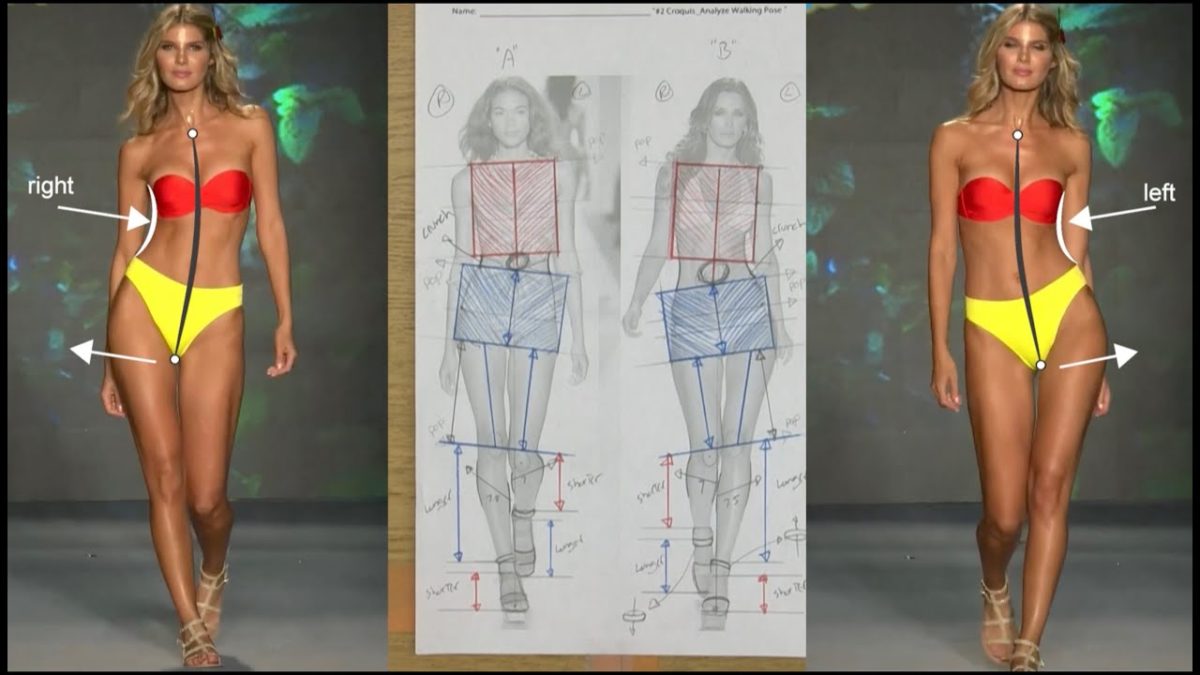Fashion designers and modeling organizations need to realize that super skinny models aren’t healthy. If they started featuring models of all different sizes, it would send a better message to society about beauty standards.
Many models have been diagnosed with eating disorders because of the pressure to stay thin. They are often told to skip meals and even take laxatives.
Why Are They So Skinny?
If you’ve ever watched a fashion show or browsed the latest issue of Vogue, chances are you’ve noticed that models look extremely skinny. Almost anorexic. So what’s the deal with this? The fashion industry would like you to believe that it’s moved on from the days when girls starved themselves to be in with a chance of making it big. That there is a new, body-positive era, and that girls no longer have to starve themselves in order to get the attention of the designers who cast them and the clients who buy their clothes. But is that really the case?
Designers often cite that they prefer to use skinny models because the smaller frames provide a better canvas for their designs. They also believe that the smaller frame will be more relatable to consumers and will help them to envision themselves in the clothing. Plus, they are usually less expensive than full-figured models and don’t require as many alterations before the show.
But critics of the fashion industry point out that most models are not a good representation of what actual women look like. In fact, most are only a few pounds away from being dangerously skinny themselves. This is because of the way that the modeling industry is set up. It’s a vicious cycle. A model puts on a few pounds and can’t fit into a sample size, so she starts dieting. She loses weight, gets a great job, and then thinks that she can keep losing more weight until she is “mannequin thin.”
In addition, some models may diet so much that they are not getting all the nutrients that they need. This can cause health problems, such as hair loss and weak bones. It can also lead to mental health issues, including anxiety and depression.
Even supermodel Claudia Schiffer, who has a 24 inch waist, is worried that today’s fashion models are too thin. She recently criticized the industry for casting models who are “too skinny and not very pretty” and called for an end to this trend. And it seems that the industry is listening, at least to some extent. Last month, Madrid Fashion Week banned models below a certain body-mass index from participating in the shows.
The Industry Puts A Lot Of Pressure On Models To Maintain Their Physique
Fashion models are subjected to a lot of pressure from the industry and their agents to stay as thin as possible. This type of pressure can cause some models to develop unhealthy eating habits, leading to eating disorders such as bulimia and anorexia. These disorders can have serious consequences on a model’s health, including death. The ‘thin ideal’ that the industry pushes can also lead to mental health problems, including depression.
Although the issue of skinny models has been a long-standing problem in the industry, many brands and designers have been trying to change this by casting more diverse models. This includes plus-size and older models. These changes can help to promote a healthier and more realistic body image for models.
However, it’s important to note that there is no one size fits all when it comes to healthy weights. An individual’s healthy weight will depend on a variety of factors, including height, bone structure, market, and body type. Therefore, it’s important for people to be aware of what a healthy weight is for them and not try to achieve a certain size based on the images that they see in advertisements or on social media.
In the past, slender models have been used by designers to showcase their clothes. These styles often have to be shown on a slim canvas in order to highlight their details and the way that they fit. However, the problem is that some of these designs aren’t suitable for a slim frame.
Moreover, some models are forced to stay slender in order to get jobs and continue their careers. If a model gains too much weight, they may not be cast in shows or their agency might refuse to work with them again. This can be particularly hard on young models who are just starting out in their careers.
It’s also worth noting that some models have experienced body shaming from their employers and fans. For example, Victoria’s Secret Angel Gigi Hadid has been subjected to body shaming from the press and even from trolls online.
In addition to this, some of the world’s biggest fashion brands have been accused of using unhealthily skinny models. For example, YSL was recently banned from British TV for airing an advert that appeared to use a malnourished model. The model in question was only 5ft10in, which is far below the healthy BMI of a woman of that age.
Models Have To Go To Extreme Lengths To Get Cast In Shows
The slender models that grace the runways of Paris Fashion Week may look alluring, but that doesn’t mean they are healthy. In fact, they are incredibly unhealthy and a lot of the time have to go to extreme lengths just to get cast in shows. Many models have reported starving themselves, eating nothing but steamed vegetables, and taking laxatives in order to stay thin. These extreme measures are dangerous and can lead to eating disorders.
The fashion industry has made a big push in recent years to combat its image of fetishising waif-like models and include more body diversity. However, it seems that the change is not quite yet complete. The Yves Saint Laurent show that took place on Tuesday night appeared to promote malnourished models once again, despite the brand pledging to restrict the use of super-thin models in 2017.
There are a few reasons why skinny models have to go to such extreme lengths to get cast in shows. First of all, there is the desire to be noticed and set apart from the rest of the audience. This is especially true if you’re trying to make it in the highly competitive world of modeling. Secondly, many models feel that their thin bodies help to highlight the clothes they wear and make them look more expensive. This is a huge selling point for designers and can be very lucrative, especially for new models who want to gain as much work as possible.
Finally, some models are pressured by their agencies to stay skinny in order to keep their jobs. This can be a very difficult and harmful pressure to have, especially for young girls and women who look up to them. In addition, a lot of people have difficulty identifying with models who are very thin and may therefore feel less connected to them.
While it would be irresponsible to suggest that super-thin models cause eating disorders, they can certainly play a role in the development of an unhealthy relationship with food and an idealisation of an unrealistic and unobtainable physique. The pressure on models to be extremely skinny is a worrying trend that needs to be addressed. Luckily, there are a number of initiatives that aim to tackle the problem.
Models Are Often Diagnosed With Eating Disorders
There is a lot of pressure for fashion models to be thin. Some have been diagnosed with eating disorders like anorexia and bulimia. These conditions are serious and can have devastating effects on a person’s health. Many people who have these conditions have to be hospitalised. The problem is that the fashion industry has a major role in encouraging these unhealthy habits in teenagers. This is because the modeling industry often portrays skinny bodies as being beautiful.
This makes teenagers work hard to attain a model-like body, which is not good for their health. As a result, they develop unhealthy eating patterns, and this is what leads to eating disorders. Some of the most common eating disorders that have been linked to the modeling industry are anorexia, bulimia, binge-eating, and diet pills.
In order to avoid getting caught up in this cycle, it is important for fashion models to be able to control their eating and exercise habits. This is why it is so important for them to have support from family and friends.
It is also important for them to find healthy ways to deal with stress. This may include meditation, yoga, and exercise. It is also important for them to eat a variety of foods. This will help ensure that they are getting all the nutrients they need. It is also important for them to drink enough water and take multivitamins.
Some agencies and countries have started to make it harder for models to be too thin by requiring them to have medical certificates before being allowed to work. This is a step in the right direction, but there is still a long way to go to prevent these eating disorders from occurring.
It would be wonderful if we could never see another ultra-thin fashion model on the runway or in advertisements again, but that isn’t likely to happen. The fashion industry needs to change how it perceives beauty and start to embrace all kinds of body shapes and sizes. If this doesn’t happen, it will be difficult to stop eating disorders from spreading among young teenagers.
Related posts
Recent Posts
Advertisement



